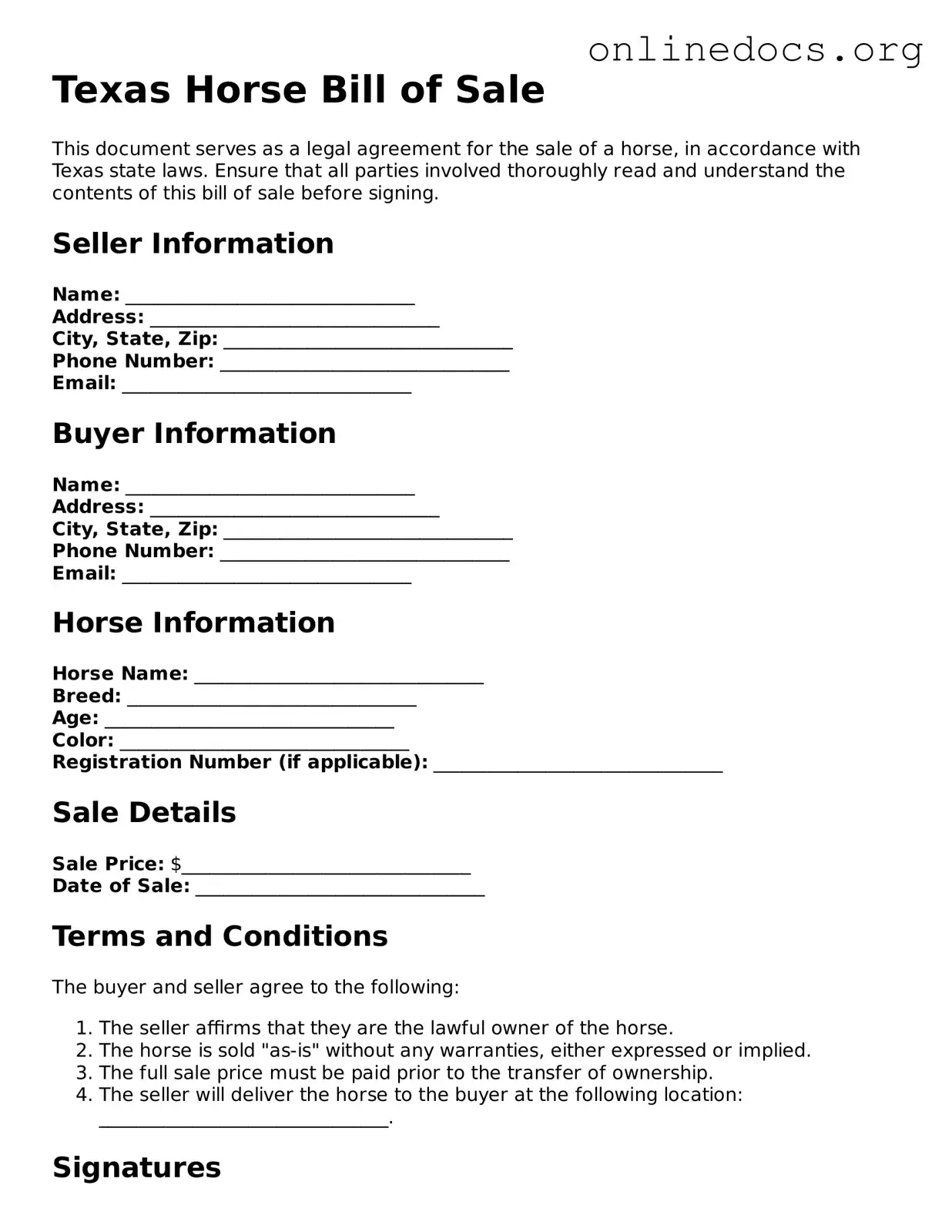The Texas Horse Bill of Sale form shares similarities with the Vehicle Bill of Sale. Both documents serve as proof of transfer of ownership. They include essential details such as the buyer's and seller's names, the description of the item being sold, and the sale price. Just like the horse bill, the vehicle bill also requires signatures from both parties to validate the transaction. This ensures that both the buyer and seller have a clear record of the sale, which can be important for future legal or financial matters.
Another document comparable to the Texas Horse Bill of Sale is the Boat Bill of Sale. This document is used when transferring ownership of a boat. Similar to the horse bill, it includes information about the buyer and seller, a description of the boat, and the sale price. Both documents provide a legal record of the transaction, protecting the interests of both parties involved in the sale.
For those looking to navigate the specifics of ownership transfer, our guide on the comprehensive Trailer Bill of Sale form can provide essential insights. This document is vital for ensuring a smooth transaction when buying or selling a trailer, detailing important information that could protect both parties involved. Discover how to fill out this form effectively by visiting comprehensive Trailer Bill of Sale details.
The Livestock Bill of Sale is also akin to the Texas Horse Bill of Sale. This document is specifically designed for the sale of livestock, including cattle and pigs. It contains information about the buyer and seller, the type and number of livestock sold, and the sale price. Like the horse bill, it serves as a formal record of ownership transfer, which can be important for agricultural and legal purposes.
The Real Estate Purchase Agreement shares some characteristics with the Texas Horse Bill of Sale. While it deals with real property rather than personal property, both documents outline the terms of a sale and include details about the buyer and seller. They both require signatures to finalize the transaction, providing a clear record of the agreement between the parties.
The Equipment Bill of Sale is another document that resembles the Texas Horse Bill of Sale. This form is used when selling heavy machinery or equipment. It includes the buyer's and seller's information, a description of the equipment, and the sale price. Both documents serve to formalize the transfer of ownership and protect the rights of both parties involved in the transaction.
The Firearm Bill of Sale is similar in function to the Texas Horse Bill of Sale. This document is used when transferring ownership of a firearm. It includes details about the buyer and seller, a description of the firearm, and the sale price. Both documents require signatures to validate the transaction, ensuring that there is a legal record of the sale for future reference.
Finally, the Mobile Home Bill of Sale is comparable to the Texas Horse Bill of Sale. This document is utilized when selling a mobile home. It contains information about the buyer and seller, a description of the mobile home, and the sale price. Like the horse bill, it serves as a formal record of the transaction, providing legal protection for both parties involved in the sale.
